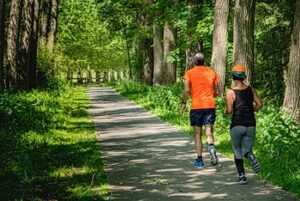As we get older, our energy decreases. This is mostly due to the mitochondria, the energy powerhouse, of our cells. With age, our cells don’t regenerate as easily and become weaker due to the dwindling number of mitochondria.
A new study has found that certain workouts can undo the severe damage caused to the mitochondria in both the young and the elderly.
Researchers at the Mayo Clinic in Rochester, Minnesota, conducted a study on the cells of sedentary men and women. One group was 30 years old or younger and the other group was older than 64. The study volunteers were randomly given different exercise programs: vigorous weight training, interval training on a stationary bike, moderate exercise on a bike and light weight lifting, and a control group that did no exercise.
The study made some surprising discoveries. All the exercise groups had improvements in fitness and blood sugar regulation. The group that did interval training had the best endurance while those that only lifted weights had more muscle mass and strength. The biggest surprise was the effect on the cells in the elderly group that did interval training. While the younger subjects of the study had activity levels change in 274 genes, the elderly group had almost 400 genes working differently. Compared to only 33 genes in the older weight lifters and 19 genes for those that moderately exercised.

All subjects that did the interval training showed an increase in health and the number of their mitochondria. This study showed that it is never too late to benefit from exercise. Interval training on a bike is quite simple, it requires pedaling very hard for four minutes, resting for three, and then repeating the sequence three more times. As endurance grows, the sequence can be repeated more times. Interval training exercises help strengthen muscles which in turn can decrease the risk of falling. Exercise is also a great mood lifter.
Other activities seniors should try is walking as much as possible. Walking 15,000 steps a day was found to decrease the risk for heart disease and help increase memory. Studies show that mixing short walks with two 30 minute walks can help you reach the 15,000 step goal. Strength training with weights can also be helpful with reducing the risk of type 2 diabetes, osteoporosis, heart disease, and even Alzheimer’s.

